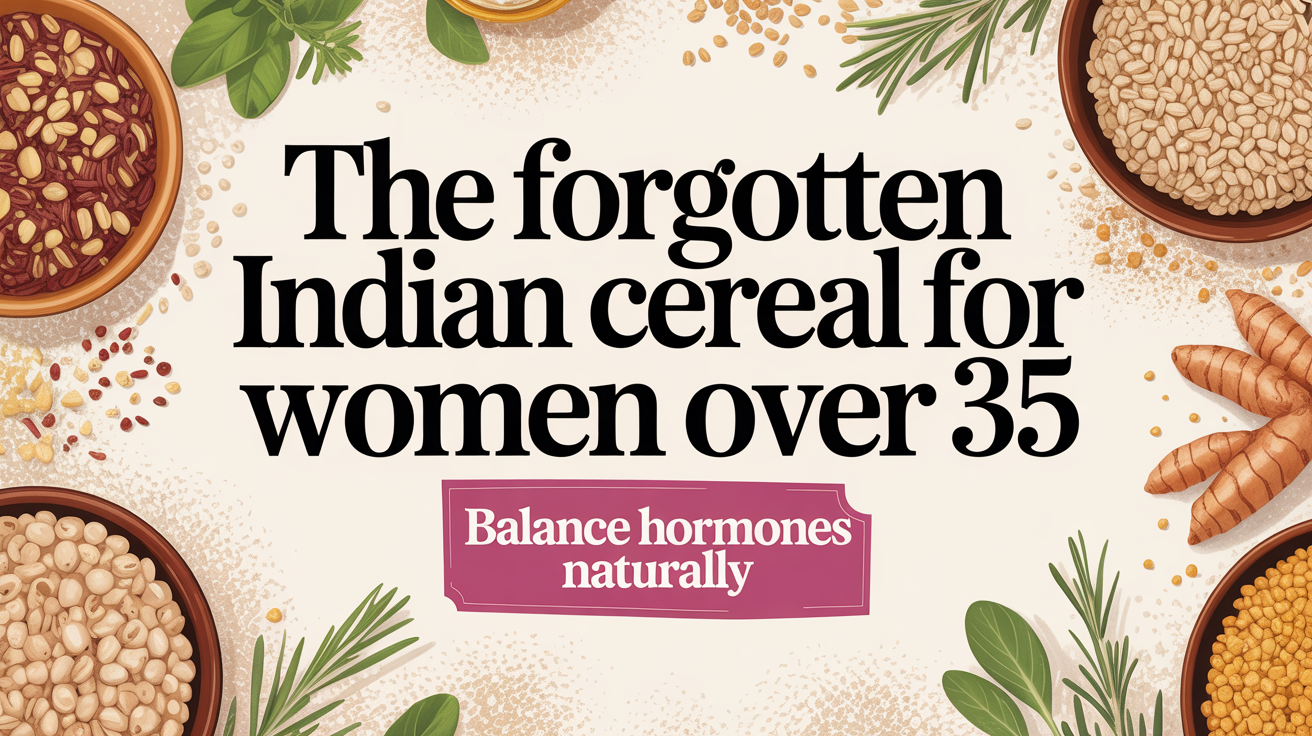For generations, Indian kitchens have relied on humble grains to nourish families. Yet in the rush toward modern diets, many traditional cereals have disappeared from our plates. One such powerhouse is ragi, also known as finger millet. While it may not look as glamorous as imported quinoa, this ancient grain is a nutritional treasure, especially for women over 35 who often face hormone imbalances, weight changes, and digestive issues.
Before you turn to expensive supplements, let us explore why ragi deserves a comeback in your diet — and how it can become your hormone-friendly best friend.
Why Hormone Balance Matters After 35
Hormonal fluctuations are a natural part of life for women, especially as they approach perimenopause and menopause. But lifestyle, stress, and diet can make these changes more intense, leading to:
- Irregular cycles
- Mood swings
- Unexplained weight gain
- Low energy levels
- Poor sleep quality
Balancing hormones through diet can help you manage these symptoms naturally. And that is where ragi comes in.
Ragi: The Forgotten Hormone-Friendly Cereal
Primary keyword: forgotten Indian cereal
Ragi is a small millet grown in parts of Karnataka, Tamil Nadu, and Andhra Pradesh. Once a daily staple, it has slowly faded from urban diets. However, its nutritional profile makes it an ideal choice for women over 35.
Nutritional Highlights of Ragi
- High in calcium — supports bone health during perimenopause
- Rich in dietary fiber — aids digestion and prevents bloating
- Plant-based amino acids — help in cell repair and hormonal balance
- Iron content — combats fatigue and anemia
- Magnesium & B-vitamins — regulate stress hormones
How Ragi Supports Hormonal Balance
1. Keeps Blood Sugar Stable
Fluctuating blood sugar can worsen mood swings and cravings. Ragi has a low glycemic index, which prevents insulin spikes and supports steady energy levels.
2. Reduces Stress Hormones
Magnesium in ragi helps relax the nervous system, reducing cortisol (the stress hormone) levels.
3. Supports Estrogen Balance
Ragi contains phytoestrogens — plant compounds that mimic estrogen in a gentle, natural way, easing symptoms like hot flashes.
4. Improves Gut Health
The fiber in ragi feeds good gut bacteria, which indirectly influence hormonal health.
Best Ways to Add Ragi to Your Diet
- Ragi porridge for breakfast with nuts and fruits
- Ragi dosa or ragi idli for a South Indian twist
- Ragi roti paired with seasonal vegetables
- Ragi malt drink for an evening snack
If you are unsure how to incorporate ragi into your meal plan, check our Muscle Gain & Fat Loss Programs for balanced diet ideas.
Frequently Asked Questions
Q1: Can women with thyroid issues eat ragi?
Yes, but in moderation. While ragi is nutrient-rich, excessive millet consumption can interfere with thyroid function in sensitive individuals. Pair it with iodine-rich foods.
Q2: How often should women over 35 eat ragi?
Two to three times a week is ideal to get its benefits without overloading on one grain.
Q3: Is ragi better than wheat for hormone health?
For women struggling with bloating, weight gain, or gluten sensitivity, ragi can be a better alternative since it is naturally gluten-free and high in fiber.
Q4: Can ragi help with weight loss after 35?
Yes. Ragi’s high fiber content keeps you full for longer, reducing unhealthy snacking.
A Simple Hormone-Balancing Ragi Recipe
Ragi Vegetable Porridge
- 3 tbsp ragi flour
- 1 cup water
- Chopped carrots, beans, and spinach
- A pinch of turmeric and cumin
Cook ragi flour with water until smooth. Add vegetables, spices, and simmer until cooked. Serve warm.
The Bigger Picture: Whole Lifestyle Approach
While ragi can be a powerful food for hormone health, it works best when combined with:
- Adequate protein intake
- Hydration habits like Smart Hydration: Indian Morning Rituals Beyond Plain Water
- Stress management practices
- Quality sleep
For a personalized hormone-balancing plan, book a consultation with our expert nutrition team.
Conclusion
This forgotten Indian cereal is more than just a grain — it is a tool for better hormonal health, improved digestion, and steady energy. Women over 35 can greatly benefit from reintroducing ragi into their diets in simple, delicious ways.


